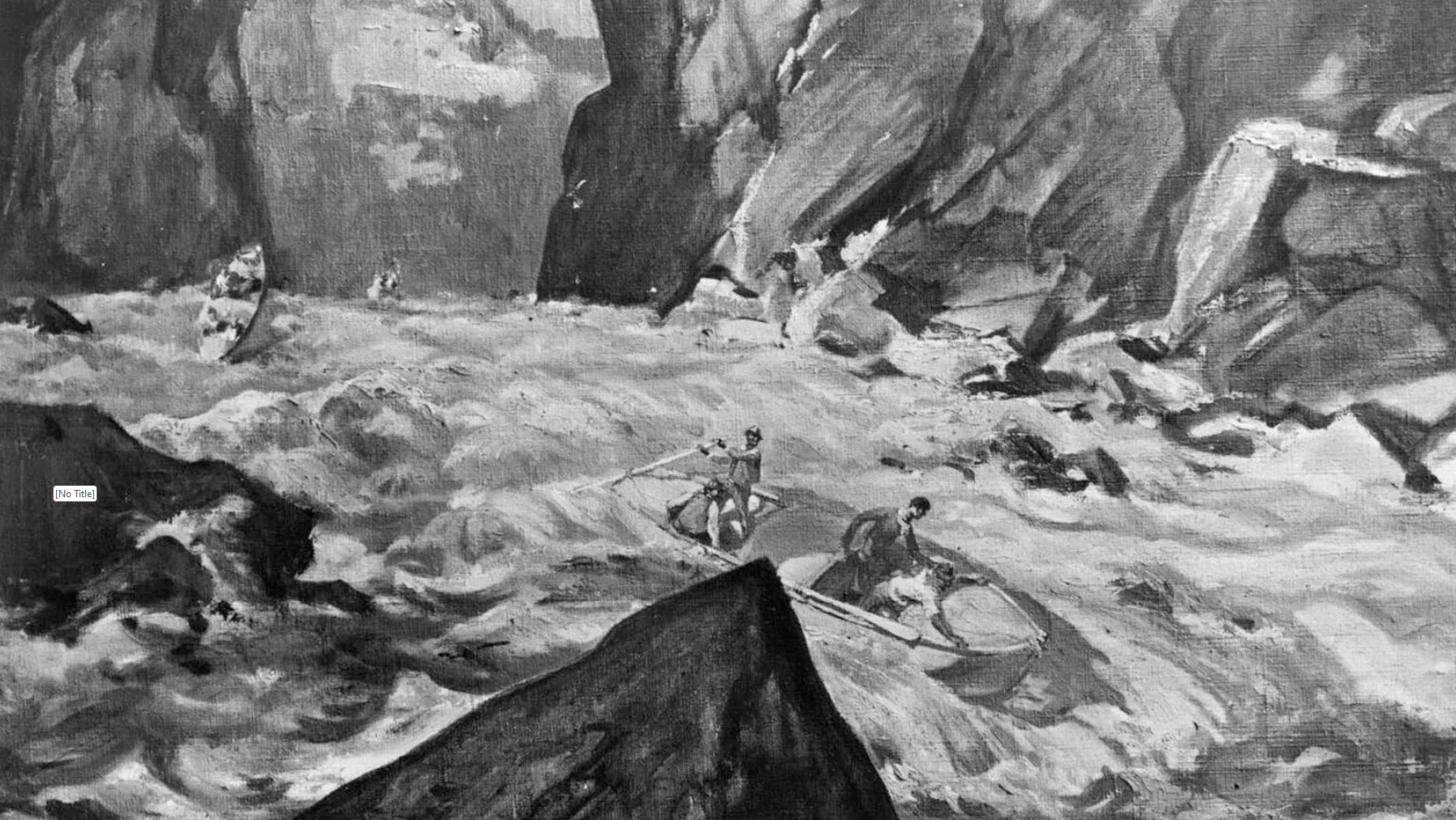Painting by Henry C. Pitz showing John Wesley Powell and his party descending the Colorado River through the Grand Canyon, presumably during the historic 1869 expedition. (Image credit: Smithsonian Institution, Bureau of American Ethnology, via Yale Climate connections)
When will climate change turn life in the U.S. upside down?
A review of:
Intensifying extreme weather events and an insurance crisis are likely to cause significant economic and political disruption in the U.S. sometime in the next 15 years.
First published at Yale Climate Connections, August 19, 2024 by Jeff Masters
(Jeff Masters, Ph.D., the Director of Meteorology for Weather Underground)
Note: Dr. Masters opens this epic article with an analogy of the relatively unprepared nature of John Wesley Powell’s exploration of the Grand Canyon in 1869 to our climate change culture today with this quote from Powell:
“We are now ready to start our way down the Great Unknown. We have an unknown distance yet to run, an unknown river to explore. What falls there are, we know not; what rocks beset the channel, we know not; what walls rise over the river, we know not. Ah, well! We may conjecture many things. The men talk as cheerfully as ever; jests are bandied about freely this morning; but to me the cheer is somber and the jests are ghastly.”
(Masters continues in paragraph 3)
“It is inevitable that climate change will stop being a hazy future concern and will someday turn everyday life upside down. Very hard times are coming. At the risk of causing counterproductive climate anxiety and doomism, I offer here some observations and speculations on how the planetary crisis may play out, using my 45 years of experience as a meteorologist, including four years of flying with the Hurricane Hunters and 20 years blogging about extreme weather and climate change. The scenarios that I depict as the most likely are much harsher than what other experts might choose, but I’ve seen repeatedly that uncertainty is not our friend when it comes to climate change. This will be a long and intense ride, but if you stick through the end, I promise there will be a rainbow.
By late this century, I am optimistic that we will have successfully ridden the rapids of the climate crisis, emerging into a new era of non-polluting energy with a stabilizing climate. There are too many talented and dedicated people who understand the problem and are working hard on solutions for us to fail.”
Above is the first and most important understatement from Masters, “…that we will have successfully ridden the rapids of the climate crisis, emerging into a new era of non-polluting energy with a stabilizing climate.” This implies that clean energy can save us from the climate crisis; far from it. This concept is extremely common in our current climate culture, or what can be referred to as our “legacy climate culture.” The lethargy of our legacy climate culture does not yet acknowledge fundamental changes in our climate responses to existing warming. We have warmed beyond the evolutionary boundaries of our old climate; crossed a critical threshold into a new world. This threshold is the maximum normal temperature of the climate our Earth systems evolved into. Once any system encounters conditions that are beyond its evolutionary boundaries, the system begins to degrade and collapse so that new species and mechanisms can evolve that are tolerant of the new conditions.
Our global climate culture has yet to factor this threshold crossing or tipping point into the massive body of science that defines our climate crisis. The reasons why this fundamental piece of science is not the defining fundamental of our legacy climate culture are explained by eleven understating biases in our climate culture: climate science, our climate change outreach media machine and the ubiquitous interpretation that our future is safe with further warming. See An Introduction to Advanced Climate Change, Melton, 2023, for deep interpretation of over 600 academic findings that define the eleven understating characteristics of our climate culture:
- Scientific reticence
- Moral hazard
- Consensus compromise
- The scenario bias
- Media reporting
- Modeling bias with extremes and tipping
- The Climate Change Counter Movement
- Cultural feedback into science findings
- Non-stationarity, and frequentist statistics
- Event attribution science
- Slow science; climate change is faster than science
These understating biases serve to paint a much gentler picture of our warmer future that has actually been unfolding for the last 20 or so years as are explained by this collection of climate change effects and impacts happening generations to a century or more ahead of projections, “Impacts Happening Ahead of Projections or Greater than Projections,” Melton 2023.
Masters is right about our future will be more extreme than suggested by climate science, but he completely misses the boat on solutions. Future emissions elimination only affects future warming. Fundamentally, the degradation and collapse of our Earth systems does not self-stabilize unless we cool Earth from today, something a clean energy future and net zero tomorrow morning cannot do as they only affect further future warming. It is current warming that must be removed.
Not only does elimination of all future emissions this instant allow irreversible Earth systems collapses that create natural feedback greenhouse gas emissions that dwarf humankind’s, Warming in the pipeline means complete elimination of future emissions allows even further warming from today. This warming in the pipeline will result in substantial additional warming as our Earth systems come into equilibrium with the excess greenhouse gasses in our sky that have been emitted some hundreds of times faster than any time in the last 65 million years, since the giant asteroid struck the Yucatan Peninsula and created the extinction of the dinosaurs.

